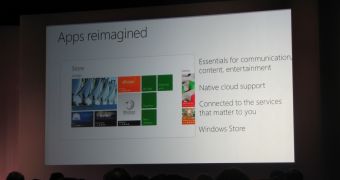With Windows 8, Microsoft is proposing a new, radically different approach on what Windows means for users, through optimizing the platform for use on tablet PCs.
Through that, the company has redesigned most of Windows 8 to deliver a great experience when touch input is used, though it did not forget traditional keyboard and mouse users either.
Whether choosing to navigate and take advantage of the platform through touch or a mouse, users will receive a new experience on their devices, that’s for sure.
This experience extends to applications for the platform as well, especially to those designed using the Metro UI, and Microsoft is making sure that developers are aware of that.
In fact, it has just provided some additional info on what the input platform on Windows 8 is all about, so that app builders could easily know how to take advantage of its abilities.
In a recent post on the Windows 8 app developer blog, Reed Townsend, lead program manager, Windows, is explaining that the input platform in Windows 8 was designed on three layers.
“At the bottom are the Windows Runtime Input APIs – providing the most power and flexibility. Built on top of those are the gesture and pointer events in the HTML and XAML frameworks, which provide common gesture and raw data events for apps,” he explains.
“Finally, the app templates and controls provide basic functionality that that you can use in a variety of situations.”
Developers building applications for the platform can easily use only the app templates and the HTML and XAML controls that Microsoft is providing (such as ListView or SemanticZoom) for designing their applications.
“That gives developers basic functionality, plus bonus goodness like supporting common interaction patterns (e.g. the touch language), support for touch targeting, accessibility support, tooling integration, and more,” Reed Townsend continues.
For example, when it comes to touch input, the scroll view controls for HTML and XAML in Windows 8 provide panning and zooming capabilities, as well as behaviors like inertia, bounce at content boundaries, and more.
But there’s more to it, and application developers are certainly interested in learning more on what they can do to optimize their Metro-style applications for being used both with touch and keyboard and mouse. The aforementioned blog post should prove of help in this direction.

 14 DAY TRIAL //
14 DAY TRIAL //